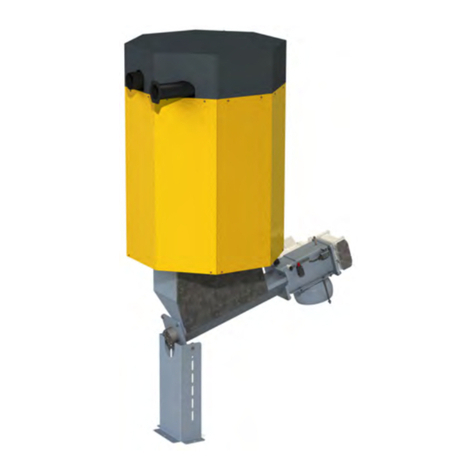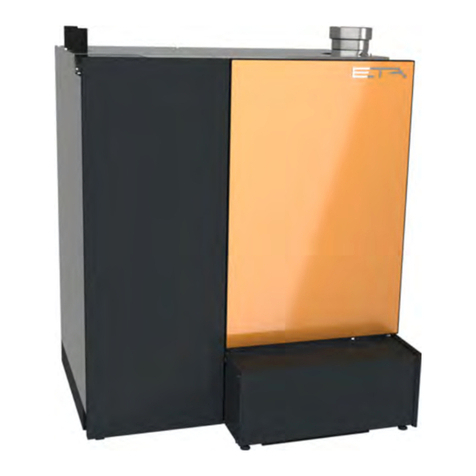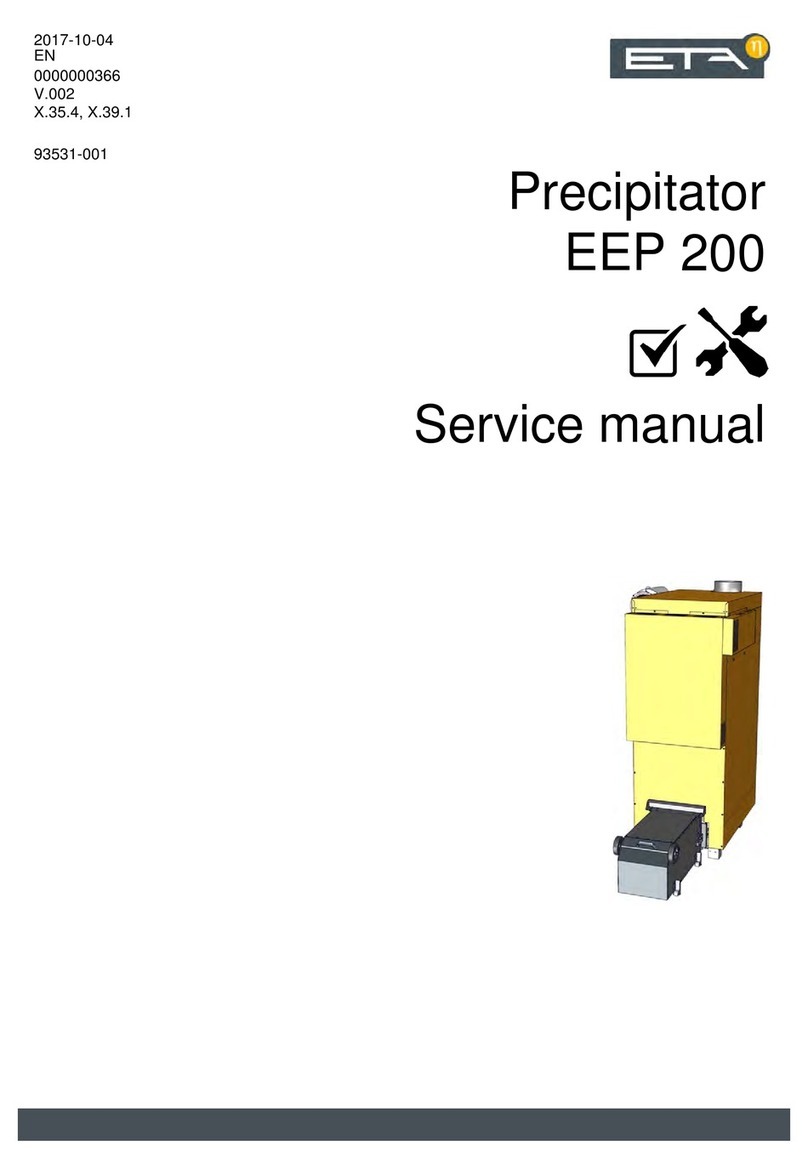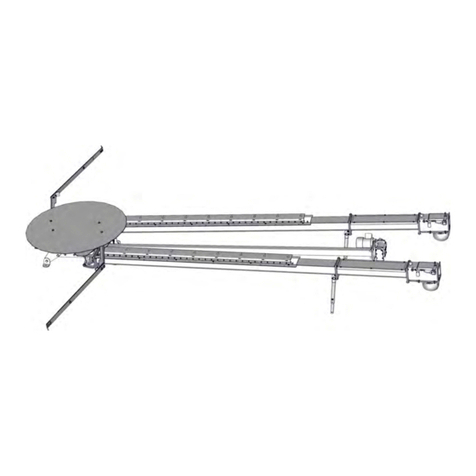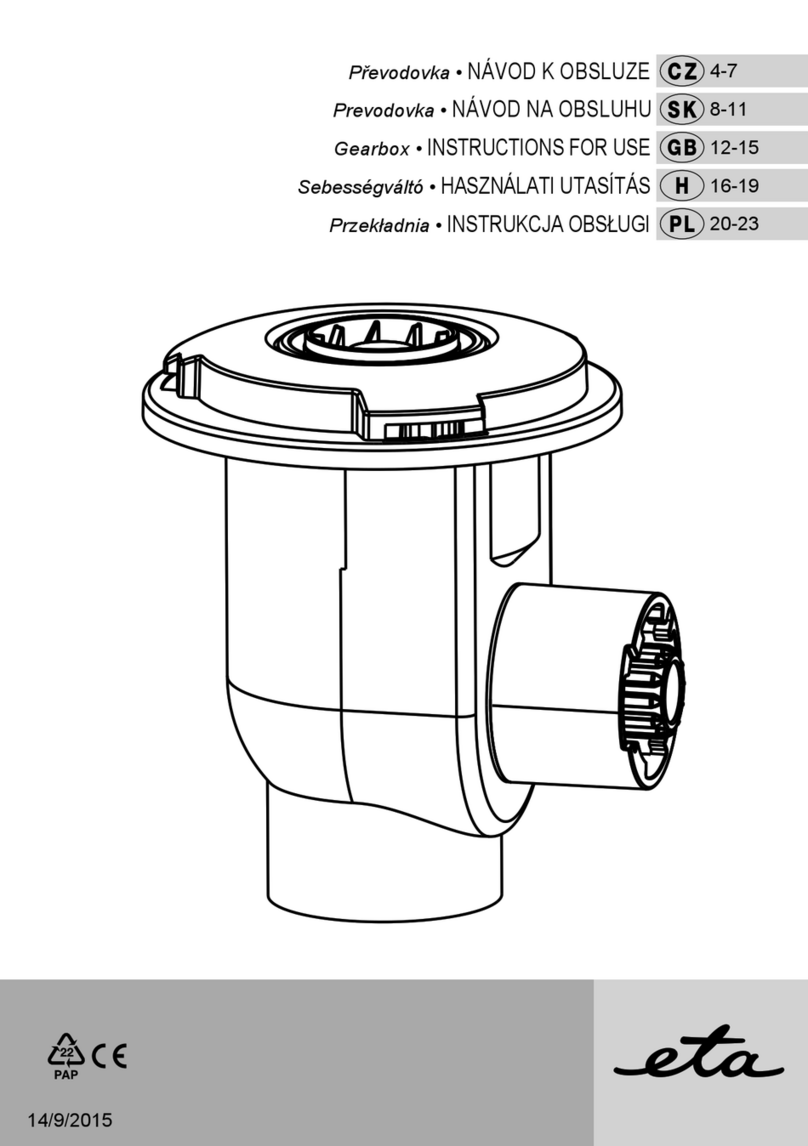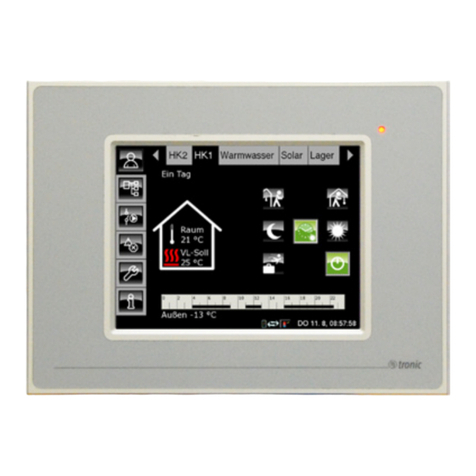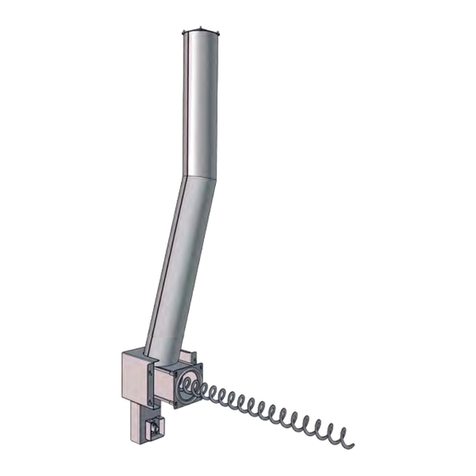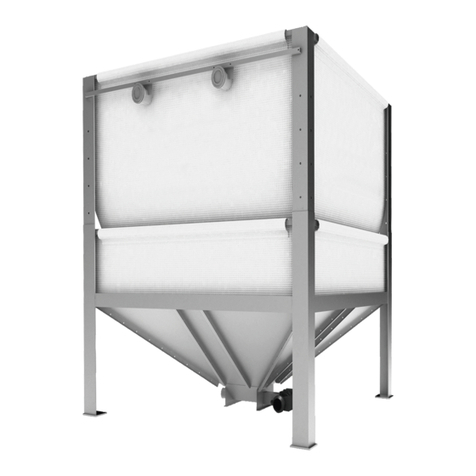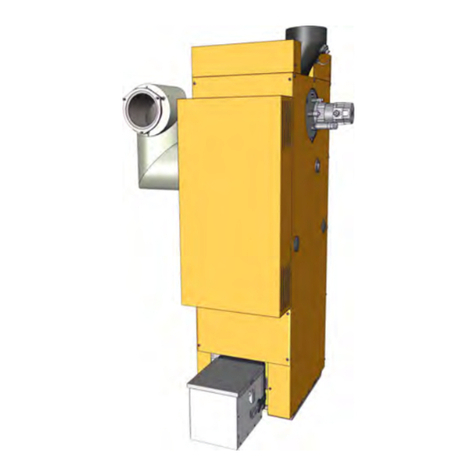
6 www.eta.co.at
Warranty, guarantee and liability General
1.3 Warranty, guarantee and liability
Requirements
We can only accept liability for the function of our
products if they are correctly installed and operated.
This is only possible if the conditions below are
complied with.
Maximum of 2,000 hours at full load per year
The boiler described in this user manual may only be
used for heating and producing hot water, with no more
than 2,000 full-load hours annually.
Installation in a dry room
For set-up, a dry room is required. In particular, only
condensation dryers may be used as clothes dryers in
the same room.
Observe local building and fire safety regulations
Local building and fire safety regulations must be
observed.
Connecting pipe to chimney
The connecting pipe to the chimney must be a
moisture-resistant stainless steel flue pipe with
maximum diameter of 120 mm and at least 3 cm of
insulation. For lengths over 2 m, correspondingly more
insulation is needed.
Suitable fuel
The boiler is suitable for use with wood pellets
according to EN ISO 17225-2:2014, quality class A1,
ENplus-A1. Operation with unsuitable fuels, in
particular those containing halogens (chlorine) or high-
slag pellets such as from grain waste, is not permitted.
Ensure supply air is free from aggressive
substances
The air supplied to the boiler must be free from
aggressive substances such as chlorine and fluorine
from solvents, cleaning agents, adhesives and propel-
lants, or ammonia from cleaning agents, to prevent
corrosion of the boiler and chimney.
Permissible water hardness
Water is the intended heat-transfer medium. For
special anti-frost requirements, up to 30% glycol may
be added. Softened water is required for the initial fill-
up of the heating system and for refilling after repairs.
Addition of hard water should be minimised to limit
limescale build-up in the boiler.
In order to protect the boiler from calcification, the
water hardness of the heating water must be
taken into account. Observe the indications outlined in
ÖNORM H 5195-1. Details can be found in chapter 7.3
"Water hardness".
pH value between 8 and 9
The pH value of water used to fill the heating system
must be between 8 and 9.
Use a sufficient number of shut-off valves
Set enough shut-off valves to avoid bleeding large
amounts of water during repairs. Any leaks in the
system must be repaired at once.
Sufficiently large expansion tank
To protect against air suction if the system cools off, a
specialist must design a sufficiently large expansion
tank. The 18-litre expansion tank built into the boiler is
sufficient for typical underfloor or radiator systems. If
there is a buffer storage tank, an additional expansion
tank will be needed.
Sufficient air venting must also be ensured. Open
expansion tanks or underfloor heating with permeable
piping also have a high air intake, resulting in above-
average boiler corrosion. Corrosion damage to the
boiler due to insufficient air venting or high air intake is
excluded from warranty, guarantee and liability.
Sufficient power
Continuous operation with heat consumption below
the minimum specified on the type plate is only
permitted with a buffer storage tank of sufficient size.
Expanding the control system
Only components provided by us may be used for
expanding the control system, unless these are
generally available standard devices, such as thermo-
stats.
Regularly perform cleaning and maintenance
Cleaning and maintaining the product is essential. The
required steps and intervals are either contained in this
documentation or included as a separate document.
Repairs
Repairs are only permitted using spare parts provided
by us. The only exceptions are common standardised
parts such as electrical fuses or fastening materials, as
long as they possess the required features and do not
restrict the functionality of the system.
